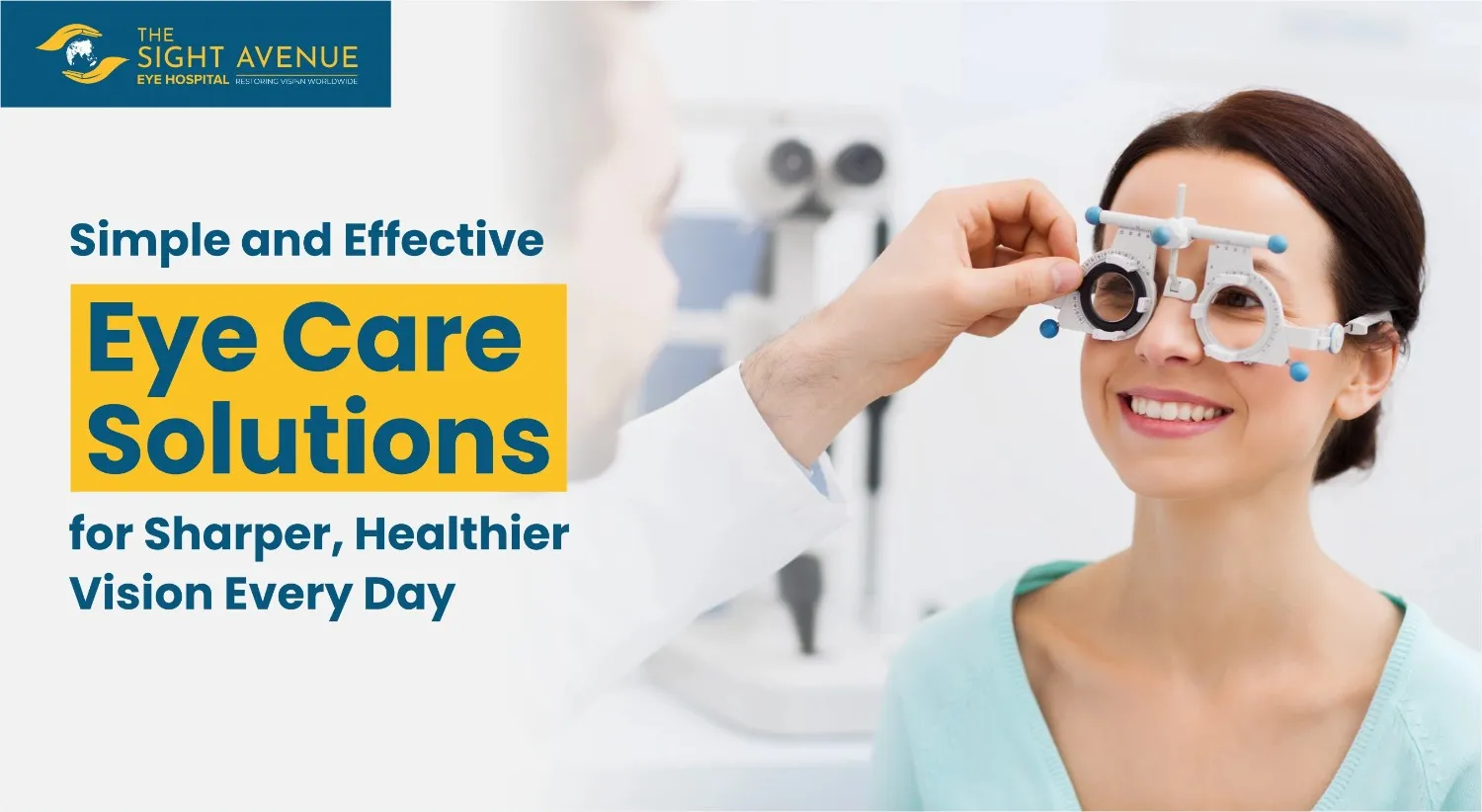How Can Squint Eye Exercises Help In Improving Vision?

Squint eye is a problem that can be either congenital or develop later as the person ages. This condition can create many hurdles in a person’s life, like those people who are currently facing squints; they can’t see in one direction at a time, and even they can’t read properly. Among the myriad remedies for squint, squint eye exercises stand out. Beyond relieving discomfort, these exercises show promise for enhancing vision. Explore the realm of squint eye exercises to grasp their potential contribution to improving eyesight and navigating the path towards clearer and healthier vision.
Understanding Squint Eyes
Squint eyes, medically known as strabismus, refer to a condition where the eyes are misaligned and don't point in the same direction. The person's eye may turn inward, outward, upward, or downward, affecting their binocular vision. Squints can emerge in childhood or later in life, impacting depth perception and causing visual discomfort. Treatment options include corrective lenses, eye exercises, or in severe cases, Surgery. Feel free to consult our best eye hospital in Gurgaon for early diagnosis and intervention, which are crucial for managing and improving visual alignment.
Know More:- Silk Eye Surgery in India
Practical Squint Eye Exercises
If you are seeking suggestions for how to cure squint eyes naturally, then these exercises might help you:
Follow the Finger
- Sit comfortably and extend your arm in front of you.
- Focus on the tip of your index finger.
- Slowly bring your finger closer to your nose, keeping your eyes fixed on it.
- Stop when you see double and try to make the images converge into one.
Near-Far Focus
- Hold an object (like a pen) close to your face, focusing on it.
- Shift focus gradually to a distant object for visual relaxation and relief.
- Reverse the process, moving from a distant object back to the near one.
- Repeat several times, ensuring smooth transitions.
Eye Tracking
- Place two objects at eye level, about a foot apart.
- Focus on one object for a few seconds, then quickly shift your gaze to the other.
- Repeat this back-and-forth movement, trying to minimize any double vision.
Pencil Push-Ups
- Hold a pencil vertically at arm's length.
- Focus on the tip while bringing it slowly toward your nose.
- Stop if you see double and concentrate on merging the images.
- Move the pencil back out, repeating the process.
Brock String Exercise
- Hang a Brock string vertically at eye level.
- Focus on the different colored beads along the string.
- Practice looking at each bead in sequence, working to improve coordination.
Circle Tracing
- Sketch a single large circle on a sheet of paper for practice.
- Trace the circle with your eyes without moving your head.
- Change directions and sizes, challenging your eye muscles.
Focus on Imaginary Objects:
- Close your eyes and imagine a distant object.
- Gradually bring it closer in your mind's eye.
- Reverse the process, moving the imaginary object away.
Palming Technique
- Rub your palms together to generate warmth.
- Cover closed eyes with palms for relaxation and comfort.
- Relax and let the warmth soothe your eyes, practicing deep breathing.
Consult a Specialist
Regularly see an eye care professional or a specialist to monitor your progress and make necessary adjustments to your exercises.
Know More: How To Remove Spectacles
The Benefits of Squint Eye Exercises
Strengthening Eye Muscles
Squint eye exercises aim to improve the strength and flexibility of eye muscles. Targeted movements can stimulate the muscles responsible for eye movement, potentially correcting misalignment over time.
Improving Coordination
Squint eyes often occur due to muscle coordination issues. Specific exercises target improved coordination, aiding seamless eye teamwork. This approach may reduce misalignment and enhance binocular vision for individuals with squints.
Enhancing Focus and Concentration
Engaging in squint eye exercises demands focused attention. Regular practice not only benefits the eyes but also enhances concentration, contributing to overall cognitive function for individuals committed to this routine.
Alleviating Eye Strain
Extended screen, reading, or visual tasks may cause discomfort and eye strain. Squint eye exercises can provide relief by relaxing the eye muscles and reducing strain, making them a valuable addition to any eye care routine.
Preventing Amblyopia (Lazy Eye)
Squint eyes may lead to amblyopia, commonly known as a lazy eye, where the brain starts to favor one eye over the other. Squint eye exercises can help prevent or alleviate amblyopia by promoting equal use of both eyes and encouraging proper visual development.
Know More: 6 Helpful Exercises to Enhance Your Eye Muscles
Conclusion
Squint eye exercises offer a promising avenue for those grappling with the challenges of misaligned vision. Whether congenital or acquired, squinted eyes can impede daily activities, affecting focus and depth perception. The recommended exercise for squint eyes in adults not only targets specific muscle groups, enhancing strength and coordination but also provides a holistic approach to eye care. Regular practice promises benefits beyond vision improvement, including enhanced concentration, reduced eye strain, and a potential safeguard against amblyopia. Embrace these exercises for a clearer, healthier vision and a brighter future. For severe conditions, feel free to visit or contact The Sight Avenue, renowned as the best eye hospital in Delhi.
Eye problems? Searching for an eye specialist near me in Delhi NCR? The Sight Avenue has 5 eye clinics in Delhi NCR. Contact us today!
Eye Hospital in Delhi
- The Sight Avenue
- The Sight Avenue
- The Sight Avenue
E-82-A, Ground Floor, Hansraj Gupta Rd, Greater Kailash I, New Delhi, Delhi 110048
Email:enquiry@thesightavenue.com
Tel : 011-4666 0666
Mob : +91-8883330799
Fortis Hospital, Escorts Okhla, New Delhi
Fortis Hospital, Vasant Kunj, New Delhi





